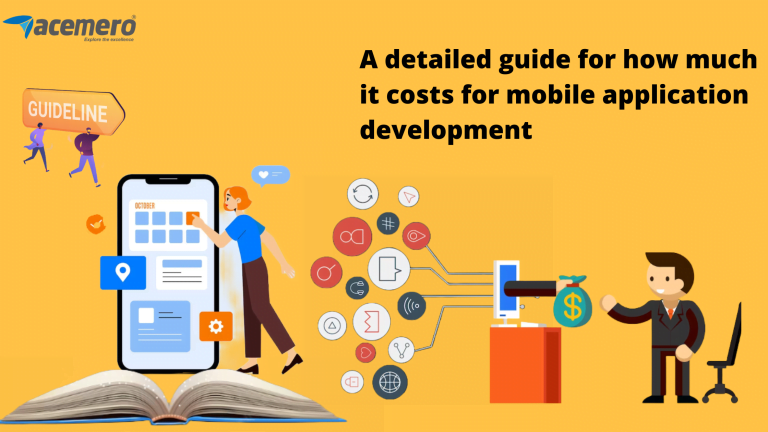
With new challenges for streamers, and longstanding headwinds for many others in media, combatting churn has become more important than ever.
Finding an audience can be as challenging as finding a good show to watch.
getty
Think of your favorite movie as a kid, say in the first 10 years of your life. Now think of your favorite movie from the past decade. Do you have one? Do you have 100?
In a world with basically infinite content, choice is one of our greatest joys—and frustrations. With each passing year, consumers seem to grow more fickle and demanding, regularly moving to the platforms and publications that offer not only the best catalog but also the best customer service, content experience, user interface, and bang for the buck.
And even these features may not be enough, as the recent upheaval among the major streamers has shown.
Holding on to viewers, readers, and listeners has become more important than ever. Yet most consumers can only maintain so many subscription services at once. The goal for media companies needs to be to sustain their interest, and with as much share of the consumer’s wallet as possible.
As such, churn is now the most prominent enemy of the media and entertainment industry business model. Consumers can be mercurial, sensitive to price and changes in content catalogs. Just as adding a service has rarely been easier, so is dropping one, which consumers have shown themselves more than willing to do when a channel is no longer serving their needs.
With these challenges front and center, leading media and entertainment companies are increasingly turning to data analytics and personalized content recommendations to improve customer experience and retention. In the dog-eat-dog digital world, it’s no longer the loudest bark that gets the most attention. It’s about pairing the right breed to the sensibilities of a specific person, and having the best stable of information and offerings to make that match and keep it going.
As subscriptions have risen, so has churn
A good example of the challenge of churn can be seen with streaming video. Deloitte performed a series of surveys in 2020 to gauge how consumers were changing their media consumption habits amidst the pandemic.
In January 2020, the average consumer in the United States subscribed to three paid streaming services; by October 2020, the number of subscriptions had risen to five. Overall, a positive development for media, but with the increase in subscriptions came a commensurate increase in churn.
In January 2020, Deloitte found that only 20% of people who had subscribed to a paid streaming service had cut at least one of those services in the past 12 months. By October, that number more than doubled, with 46% of consumers canceling a streaming service in the preceding six months. And at that time, 34% of consumers said that they’d both added and canceled a streaming service since the pandemic started.
Why did viewers churn? Deloitte noted that 62% of people in 2020 who had signed up for a service and then canceled it had done so because they signed up to watch a specific show, then canceled the service when they’d finished watching it. Price, as always, was also a big factor. In October 2020, 31% of people who canceled a service did so because it was too expensive. Another 28% canceled because a free trial or discount period ended. About 21% cut the service because of a lack of content they found interesting.
No matter how focused on addressing churn a company may be, what can they do when the whims of the consumer are so sensitive and fluctuate wildly?
Companies need to find ways to anticipate what their audiences want at least as well as the audience does—and certainly better than their competition. Two of the best defenses against churn are having an organized data platform, then using that data to personalize content recommendations and customer experience.
Data maturity is the first step to mitigating churn
Data maturity is the ability to have accurate and reliable data that can be utilized through cloud platforms, with advanced analytics informing every decision. It is one of the most important steps for media and entertainment companies to take in the effort to mitigate churn
In our experience working with companies as varied as Spotify, The New York Times, Major League Baseball, and Hearst, the first step to achieving data maturity is building a company culture where data is prioritized within the strategic business framework, and where funding is allocated to technology and human resources to build a mature data ecosystem.
Data maturity should not be a bolt-on to existing practices, but needs to become central to the company’s strategic business goals. Companies that have achieved data maturity tend to have specific teams or centers of excellence that manage goals, strategy, and tactics of the organization’s data framework.
In a 2020 survey by EY Global Media & Entertainment, 62% of media and entertainment executives said they saw the increasing availability of data as an opportunity. About 56% prioritized first-party data, versus only 13% who prioritized third-party data. When asked about their top three data priorities, 44% said that the consolidation of customer data was a top concern. About 40% said developing proprietary data sources was a priority, while 39% prioritized improving the relevance of data.
Consolidating data out of data silos to a unified data platform is the biggest challenge that most companies will face when building a roadmap to data maturity.
A report by Deloitte in partnership with the Google News Initiative on how news and media companies can achieve digital transformation through data outlined some of the technologies that companies can adopt to achieve data maturity. Two elements are required. First, media and entertainment companies need to be able to collect and store data that they are gathering from their planet-sized audiences and users with the tools listed below.
- Data management platform (DMP) helps to manage first-party data segments and integrate third-party data and push data to other systems.
- Data lake or warehouse, a central repository of data from multiple sources.
- Cloud storage for reliability, security, and scalability.
- Customer relationship management (CRM) the backbone of customer data that records and tracks user interactions with registered subscribers.
- Customer data platform (CDP) to record and track customer data across platforms and devices.
Second, companies need to make sense of all that data and derive actionable insights from it.
- Data analytics and reporting tools that can collect, organize, and analyze data from multiple sources.
- Artificial intelligence and machine learning tools. Derive even more insights through AI/ML-enabled capabilities such as computer vision, speech and object recognition, and text translation.
- Propensity modeling helps build a better understanding of customer preferences, fulfilling the key elements of personalization to prevent churn.
Below we describe some of the unique data sources available to media and entertainment companies and how it can be applied to artificial intelligence and machine learning.
Media and entertainment have unique data sources
Media and entertainment companies can improve personalization by tapping two unique sets of data particular to the industry: media content and audience behavior.
Media content includes easily identifiable metadata such as the title, headline, genre, topic, or format of a piece of content. But media data can also include context of the actual content itself.
For instance, AI tools like object recognition and computer vision can detect items within a movie and then add the description of the object to the searchable metadata of the content. If a television show contains a border collie, the AI can recognize the good dog and surface the show in a search for “shows with dogs.” Or with speech recognition and translation, AI can build a data set of the dialogue within a movie and make certain keywords part of the search for that show.
Behavioral data of the audience can be used in a variety of ways. Data can come from many different sources including a person’s location, device, browsing and scrolling, user profile, engagement, billing preferences, purchase and support history. Companies can help personalize experiences with this data by understanding how people interact with content and how best to engage with them, such as what times of the week are best for push notifications or when a person might be most amenable to a content recommendation.
Using artificial intelligence to personalize user experience
If you’ve ever wondered how your favorite streaming service seems to so uncannily know what you want to watch—even better than you might—the answer is probably some clever AI. Personalization is the practice of combining the new, massive datasets outlined above with machine learning and artificial intelligence to create experiences tailored to the specific needs and behaviors of an individual person.
Personalization is often associated with content recommendations. For example, about 70% of what is viewed on YouTube comes from a personalized recommendation. Certain streaming services are known to have some of the best content recommendation systems in the business. The goal with the personalization of content is to surface a new show, video, movie, podcast, song, band, album, article, or blog to the person at precisely the right moment.
Personalization is also an important element in search. Consider that with the right data inputs, two users searching for the same keywords could get vastly different results attuned to their consumption preferences. In both cases, content better suited to a person’s interest will keep them from looking around at other platforms or publications, helping to reduce churn.
The same is true for more traditional outlets, as well. Take a recent example from the (digital) pages of Newsweek. The publication’s chief technology officer, Michael Lukac, recently noted that “Google Cloud Recommendations AI has not only improved our click-through rate by 50% to 75% and subscription conversion rate by 10% but also allowed us to increase total revenue per visit by 10%.”
If you’re looking for more information about why personalization matters and how to bring it to your own services and experiences, discover more in our new ebook, Personalizing Media for Global Audiences.
Download ebook: Personalization of media for global audiences






